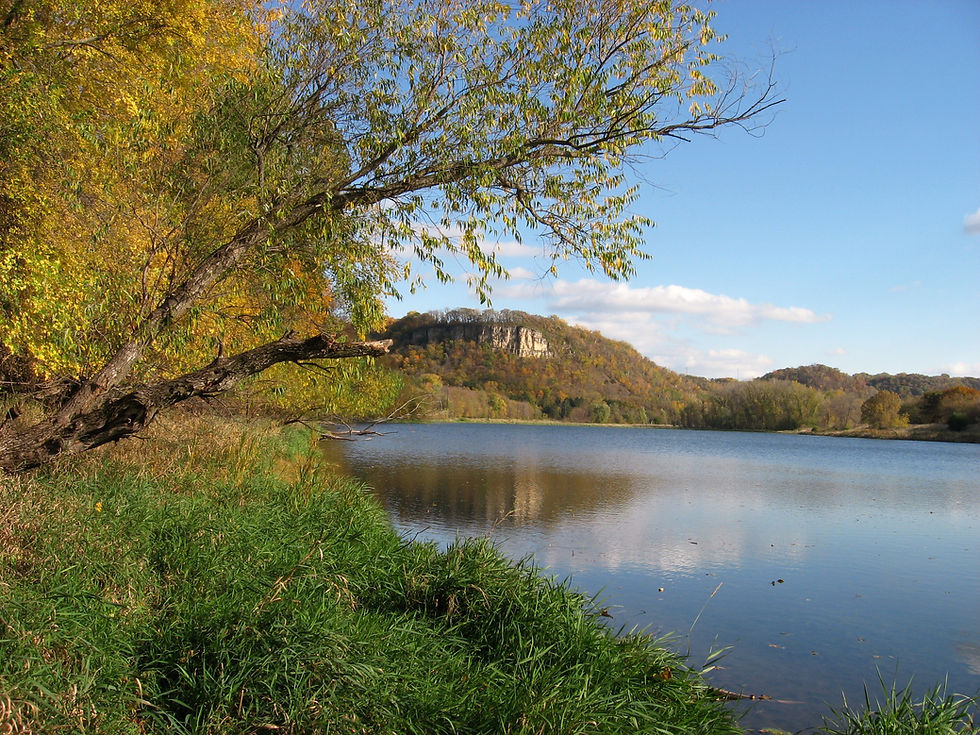Neighborhood Wildlife
- Bruce Ause
- Jul 31, 2017
- 3 min read

Turkey Vultures
In my most recent post, I reported that we were in the midst of the peak of the annual mayfly hatch. Many adult mayflies end up hanging on the foliage of trees near the river. Upon closer examination, one will discover the surface of the lake is covered with mayfly carcasses. Eventually, waves will move these remains into big windrows along the shore. Many vultures can be observed feeding on this abundant food source.

Beaver Kit
In recent weeks, I have received several local reports of young beaver kit sightings in upper Wacouta Bay near a lodge I featured in earlier posts. So on the morning of July 17th, I paddled my solo canoe up to have a look for myself. After sitting quietly near the lodge for 30 minutes, I finally had a young kit surface near my canoe. It was about the size of an adult muskrat.

Kestrel
In my last post, I reported observing several dragonflies in the area. A few days later, I started observing an adult kestrel resting on a support arm of a utility pole near the Rattlesnake bluff trail. This bird is North America's smallest falcon and has a reputation for being a fierce predator for it's size. Interestingly enough, is that dragonflies are a favorite prey. It has been observed at Hawk Ridge in Duluth during the fall migration of kestrels in mid-September coinciding with the peak migration of green darner dragonflies.

Red Fox
For the past 3 months, I have received periodic sighting reports of both red and gray fox in the neighborhood. Fox have been pushed out of native habitats in southeast Minnesota by aggressive coyotes. It is believed fox tend to feel more secure being close to human habitation. On July 12, Kathy and I observed for several minutes a red fox feasting on ripe mulberries that had fallen on the ground in a neighbor's yard.

Combining Winter Rye
On July 23rd and 24th, the large winter rye field in the Wacouta beach area was combined. It is amazing with the large implements used these days they were able to harvest such a large field in just a few short hours.

Canada Geese
In less than one hour after harvest, Canada geese were in the field eating the fallen grain. Now we are anxiously waiting for the sandhill cranes to arrive.

Leopard Frog
Because of the favorable habitat provided by our backyard pond, we observe several species of frogs. By far, the largest of these frogs is the leopard frog. The average size for these frogs is from 2.5 to 3 inches in length. A few days ago, Kathy discovered this huge leopard frog measuring over 4 inches in her flowers garden.
This brought back memories of a very unusual observation in August of 2013. On two different occasions, we observed a large leopard frog jumping and attempting to catch a low hovering ruby-throated hummingbird gathering nectar from a low hanging red monarda bloom in the flower garden. I was subsequently informed by a resource specialist from the Minnesota DNR that biologists in Ontario have observed similar behavior.

Chicory
One of the summer wildflowers now appearing along roadsides in Wacouta is the bright blue blooms of chicory, sometimes known as "Blue Sailors."
The thick taproot of this plant, when roasted, has long been used as a coffee substitute or additive.




Comments